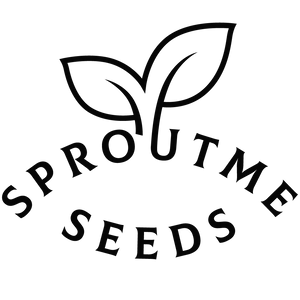Lavender
Lavender is a beloved herb known for its fragrant flowers, calming aroma, and various culinary, medicinal, and ornamental uses. Growing lavender not only adds beauty to your garden but also provides you with a versatile herb for different purposes.
Preparing for Growing:
- Selecting a planting location: Choose a sunny location with well-drained soil, preferably with a pH level between 6.5 and 7.5.
- Soil preparation: Improve soil drainage by adding sand or gravel if needed. Lavender prefers slightly alkaline soil, so amend acidic soil with lime if necessary.
- Purchasing or preparing containers/pots: If growing in containers, choose pots with drainage holes to prevent waterlogging.
Starting from Seeds Indoors:
- Seed preparation: Lavender seeds may benefit from scarification or stratification to improve germination rates.
- Choosing suitable pots/containers: Use seed trays or small pots filled with well-draining potting mix.
- Sowing and caring for seeds indoors: Sow lavender seeds thinly on the surface of the soil, cover lightly, and keep the soil consistently moist. Place the containers in a warm, sunny location or under grow lights.
Starting from Seeds Outdoors:
- Soil preparation: Prepare the outdoor planting area as described earlier.
- Selecting appropriate timing and method for outdoor sowing: Sow lavender seeds outdoors in early spring after the last frost date. Scatter seeds over the prepared soil and cover lightly.
- Caring for seeds outdoors: Keep the soil evenly moist until seeds germinate, which may take 14-28 days.
Growing in Containers/Pots:
- Selecting suitable plants for containers: Choose compact lavender varieties suitable for container growth, such as English Lavender (Lavandula angustifolia).
- Container and soil preparation: Use well-draining containers filled with a mixture of potting soil, sand, and perlite.
- Sowing or transplanting plants into containers: Sow seeds or transplant seedlings into containers following the same procedure as outdoor planting.
- Caring for container plants: Place containers in a sunny location, water when the top inch of soil feels dry, and avoid overwatering to prevent root rot.
Transplanting to Garden:
- Soil and planting site preparation: Choose a well-drained location with full sun exposure.
- Correct timing and method for transplanting: Transplant lavender seedlings outdoors after the last frost date, spacing them 12-24 inches apart.
- Post-transplant care: Water the transplanted seedlings thoroughly and provide shade for a few days to help them acclimate to outdoor conditions.
Plant Care:
- Watering: Lavender plants are drought-tolerant once established but require regular watering during the first growing season. Water deeply but infrequently to encourage deep root growth.
- Fertilizing: Lavender plants do not require much fertilizer. Apply a balanced fertilizer sparingly in early spring if soil nutrients are deficient.
- Weeding: Keep the area around lavender plants weed-free to reduce competition for nutrients and water.
- Pest and disease management: Lavender is generally resistant to pests and diseases, but occasionally aphids, spider mites, or fungal diseases may occur. Monitor plants regularly and treat infestations promptly with organic remedies if necessary.
Harvesting:
- Determining when plants are ready for harvest: Lavender flowers can be harvested once they are fully open but before they begin to fade. Harvest in the morning after the dew has dried for the highest concentration of essential oils.
- Harvesting and storage guidelines: Cut flower stems with a sharp pair of scissors or pruners. Hang bunches of lavender upside down in a warm, dry, well-ventilated area to dry. Store dried lavender flowers in airtight containers away from direct sunlight.
When to Start from Seeds by USDA Plant Hardiness Zones:
- Start lavender seeds indoors 8-10 weeks before the last frost date in your area or sow them directly outdoors after the danger of frost has passed.
Fast Facts:
- Planting depth: Sow seeds 1/8 inch deep or scatter them over the soil surface.
- Seed spacing: Thin seedlings to 12-24 inches apart.
- Plant spacing: Space plants 12-24 inches apart, depending on the variety.
- Number of seeds per pot/container: Sow several seeds per container and thin to the strongest seedling.
- Water preferences: Lavender prefers dry to moderately moist soil. Avoid overwatering.
- Sun preferences: Full sun is essential for healthy lavender growth.
- Soil type and other important factors: Well-draining, alkaline soil is ideal for lavender cultivation. Avoid heavy clay soils.
- Companion Planting: Lavender attracts pollinators like bees and butterflies and can be planted near vegetables to enhance pollination.
- Temperature Preference: Lavender thrives in warm temperatures and can tolerate mild frost once established.
- Days to Germination: Lavender seeds typically germinate in 14-28 days.
- Days to Harvest: Lavender flowers can be harvested in summer when fully open.







